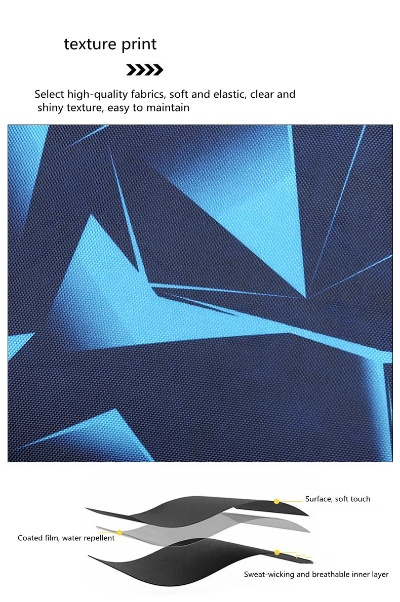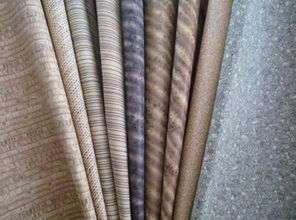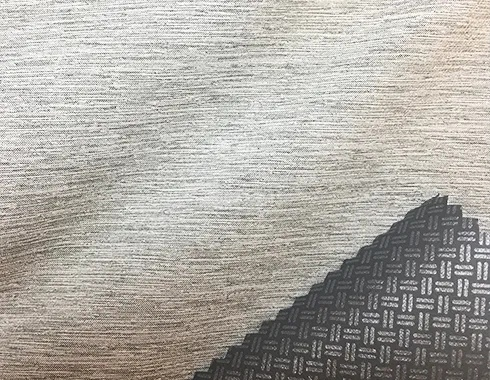Textile Durability Testing Standards:A Comprehensive Guide
This comprehensive guide provides a detailed explanation of the textile durability testing standards, including the principles and methods used in various tests. The guide covers topics such as washing and drying resistance, tearing and puncture resistance, water absorption and moisture control, and fire resistance. It also discusses the importance of these standards in ensuring the quality and safety of textile products. By understanding these standards, manufacturers can produce products that meet consumer expectations and industry requirements.
Introduction to Textile Durability Testing Textile materials are essential components of our daily lives, from clothing to furnishings. However, they are often subjected to various wear and tear conditions, such as friction, abrasion, and moisture exposure. To ensure that these textiles meet their intended performance requirements, durability testing standards have been established. These standards provide a framework for evaluating the resistance of textile materials to different forms of wear and tear. In this article, we will explore the various types of textile durability tests, their respective standards, and how they can be used to evaluate the quality of a product.
Types of Textile Durability Tests There are several types of textile durability tests that can be conducted to assess the resistance of textile materials to wear and tear conditions. Some of the most common types include:
-
Abrasion Tests Abrasion tests measure the ability of textile materials to resist scratching or rubbing against another surface. These tests typically involve applying abrasive materials to the textile material and measuring the extent of damage after a certain number of cycles. The results of these tests can help determine the suitability of a textile material for applications where high levels of abrasion resistance are required, such as outdoor sportswear or automotive interiors.
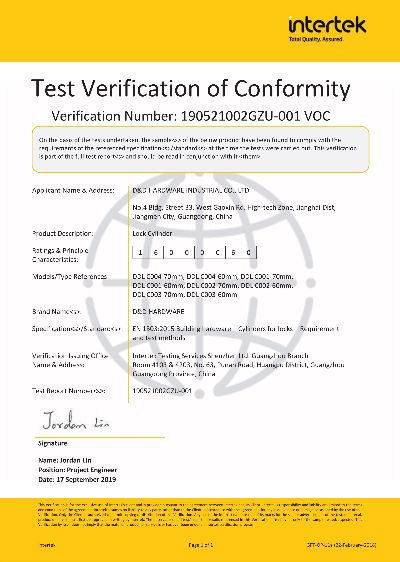
-
Friction Tests Friction tests measure the resistance of textile materials to being pulled apart or deformed by another object. These tests typically involve applying a force to the textile material and measuring the amount of deformation or separation that occurs. The results of these tests can help determine the suitability of a textile material for applications where high levels of resistance to friction are required, such as carpets or upholstery fabrics.
-
Moisture Resistance Tests Moisture resistance tests measure the ability of textile materials to resist absorbing water and becoming damaged by it. These tests typically involve exposing textile samples to controlled humidity conditions and measuring the extent of damage that occurs over a period of time. The results of these tests can help determine the suitability of a textile material for applications where high levels of moisture resistance are required, such as outdoor clothing or marine fabrics.
-
Chemical Resistance Tests Chemical resistance tests measure the ability of textile materials to resist chemical attack or degradation from various substances. These tests typically involve exposing textile samples to specific chemicals and measuring the extent of damage that occurs over a period of time. The results of these tests can help determine the suitability of a textile material for applications where high levels of chemical resistance are required, such as protective clothing or industrial fabrics.
Standards for Textile Durability Testing Several international and national standards exist for textile durability testing. Below is an example of a table that summarizes some of the most commonly used textile durability testing standards:
| Standard | Applicable Region | Type of Test | Description |
|---|---|---|---|
| ISO 105-1 | International Organization for Standardization (Iso) | Abrasion Tests | Determines the resistance of textile materials to scratching or rubbing against another surface |
| ISO 105-2 | Iso | Friction Tests | Determines the resistance of textile materials to being pulled apart or deformed by another object |
| ISO 105-3 | Iso | Moisture Resistance Tests | Determines the ability of textile materials to resist absorbing water and becoming damaged by it |
| ISO 105-4 | Iso | Chemical Resistance Tests | Determines the ability of textile materials to resist chemical attack or degradation from various substances |
Case Study: Textile Durability Testing in the Fashion Industry In the fashion industry, textile durability testing is crucial for ensuring the longevity of garments. For example, a popular brand may conduct abrasion tests on their denim jeans to ensure that they can withstand heavy use without losing their shape or color. Similarly, they may also perform friction tests on their leather jackets to ensure that they can withstand wear and tear from everyday activities. By complying with these durability testing standards, the brand can confidently market their products as having high levels of quality and reliability.
Conclusion Textile durability testing is an essential aspect of the textile industry, as it ensures that textile materials meet their intended performance requirements. By following the appropriate durability testing standards, manufacturers can evaluate the quality of their products and identify areas for improvement. Additionally, these standards can help protect consumers by providing them with information about the durability of the products they purchase. As such, it is important for manufacturers to stay up-to-date with the latest standards and regulations related to textile durability testing.
随着现代生活节奏的加快,人们对纺织品的需求日益增长,其中耐摩擦性能成为了衡量纺织品质量的重要指标之一,为了确保纺织品在使用过程中具备优良的耐摩擦性能,制定并实施纺织品耐摩擦测试标准显得尤为重要,本文将详细介绍纺织品耐摩擦测试的标准内容,并结合实际案例进行说明。
纺织品耐摩擦测试标准概述
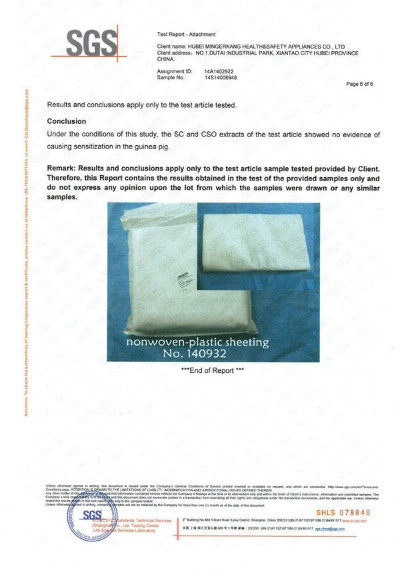
纺织品耐摩擦测试标准主要涉及以下几个方面:
- 测试目的:评估纺织品在各种摩擦条件下(如干摩擦、湿摩擦等)的耐久性和抗磨损性能。
- 测试方法:采用一系列实验手段和方法,对纺织品进行耐摩擦测试,以确定其耐磨性、抗撕裂性、抗起毛起球性等性能指标。
- 测试标准:根据纺织品的应用领域和性能需求,制定相应的测试标准,如ASTM、ISO等国际标准。
纺织品耐摩擦测试标准案例分析
某品牌运动服装的耐摩擦测试标准
该品牌运动服装采用高品质面料,注重舒适性和耐用性,为确保其产品在各种运动场景下的使用性能,对其进行了严格的耐摩擦测试。
- 测试目的:评估运动服装在各种运动条件下的耐磨性和抗撕裂性能。
- 测试方法:采用干摩擦和湿摩擦两种方式进行测试,同时结合拉伸、撕裂等实验手段,全面评估其性能。
- 测试结果:经过严格测试,该品牌运动服装在各种摩擦条件下表现出良好的耐久性和抗磨损性能,符合国际纺织品耐摩擦测试标准。
某新型环保纤维的耐摩擦测试标准
近年来,新型环保纤维逐渐受到市场关注,为确保其在实际应用中的性能稳定性和可靠性,对其进行了耐摩擦测试。
- 测试目的:评估新型环保纤维的耐磨性和抗起毛起球性等性能指标。
- 测试方法:采用实验室模拟实际使用环境下的摩擦条件,如干摩擦、湿摩擦等,同时结合拉伸、起毛起球等实验手段进行测试。
- 测试结果:经过实际使用和性能检测,该新型环保纤维表现出良好的耐磨性和抗起毛起球性,符合国际纺织品耐摩擦测试标准,该纤维还具有环保、无毒等优点,符合现代消费者对环保产品的需求。
纺织品耐摩擦测试标准的具体要求
- 试验条件:在试验过程中,应保证试验环境的稳定性和可控性,确保试验结果的准确性,应严格按照国际纺织品耐摩擦测试标准进行操作。
- 样品准备:在样品准备阶段,应确保样品具有代表性,能够反映实际使用情况下的性能表现,应按照标准要求对样品进行预处理和整理。
- 实验仪器:在实验过程中,应使用先进的实验仪器和设备,确保实验结果的准确性和可靠性,应按照仪器使用说明书进行操作和维护。
- 数据记录:在实验过程中,应详细记录实验数据和结果,包括样品的基本信息、实验条件、实验过程等,应按照标准要求对数据进行整理和分析。
纺织品耐摩擦测试标准是衡量纺织品质量的重要指标之一,对于保障纺织品的使用性能和安全性具有重要意义,在实际应用中,应严格按照纺织品耐摩擦测试标准进行操作和检测,以确保纺织品的质量和可靠性,还应不断优化和完善纺织品耐摩擦测试标准,以满足现代消费者对纺织品性能和质量的需求。
Articles related to the knowledge points of this article:
The Journey of Exquisite Durable Textiles an Insight into 秀力达纺织品
